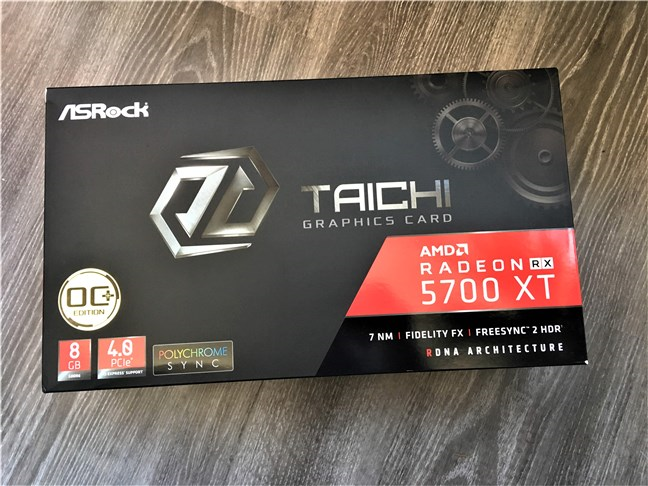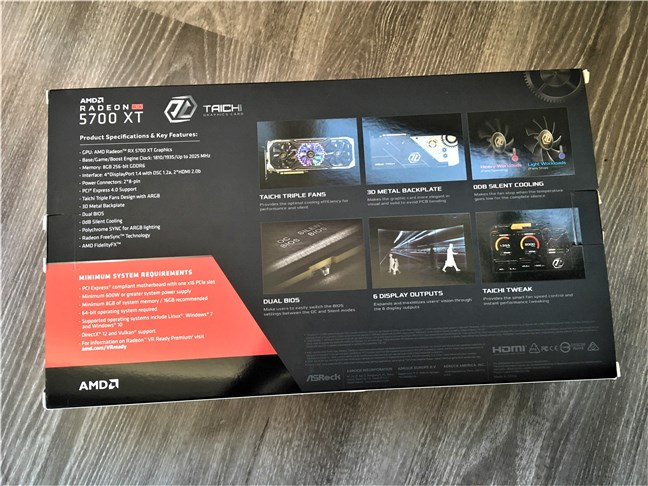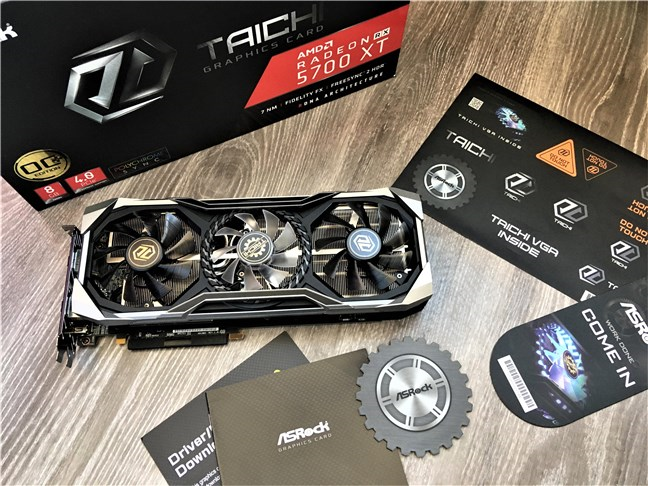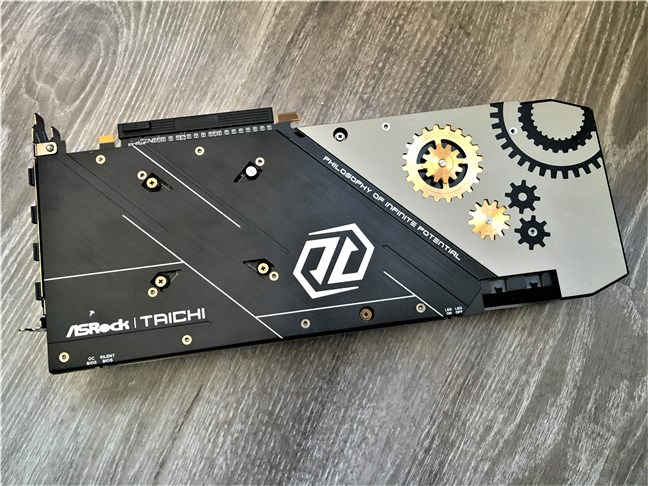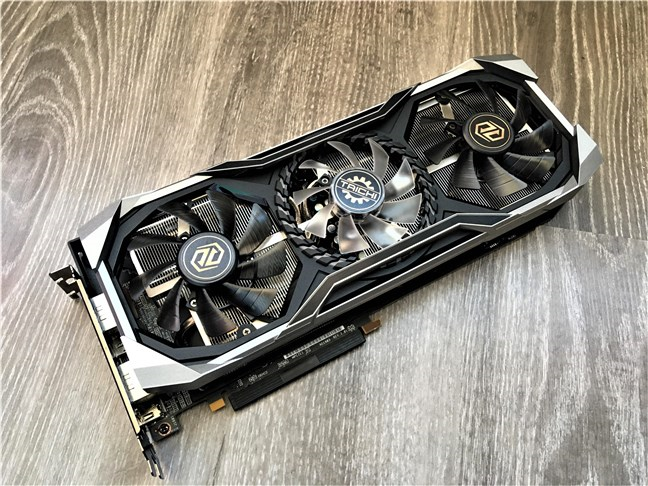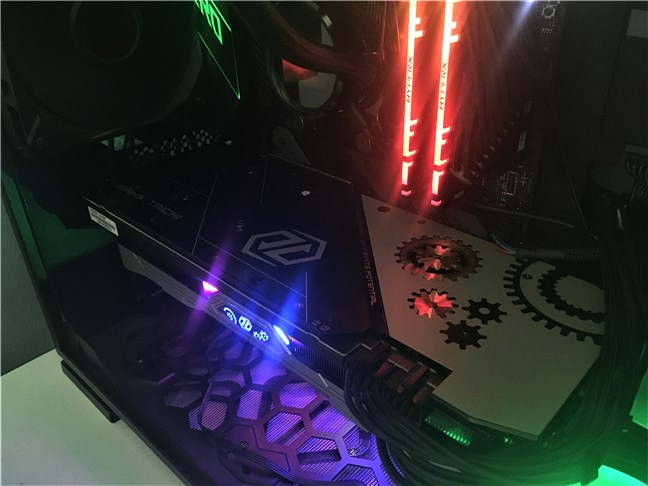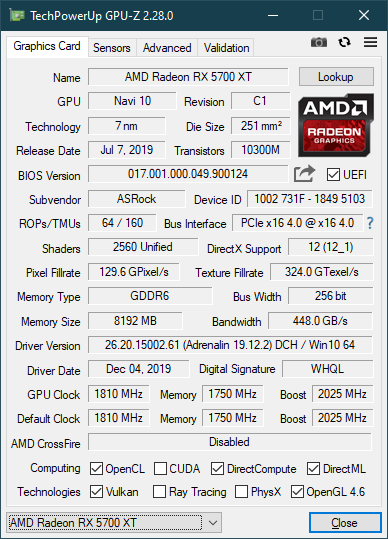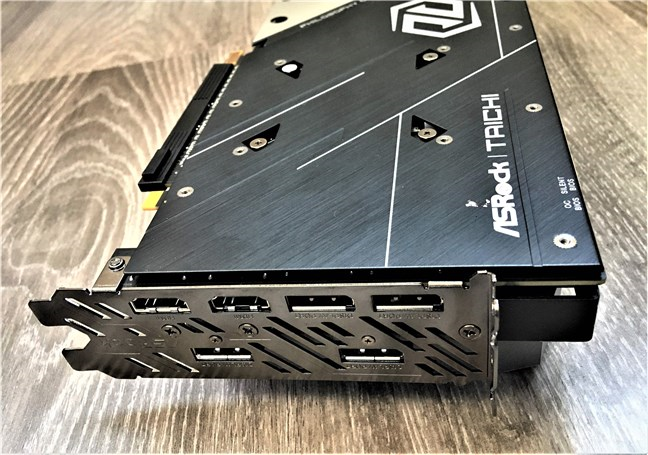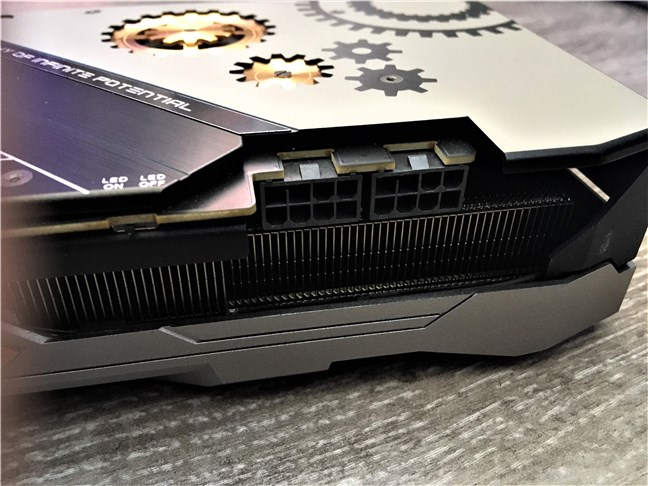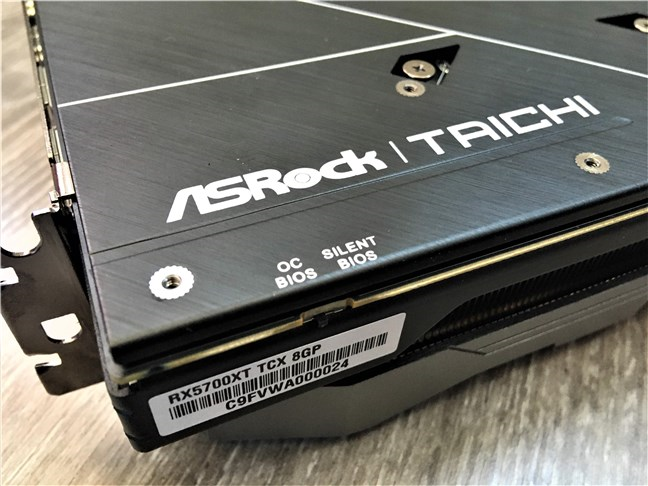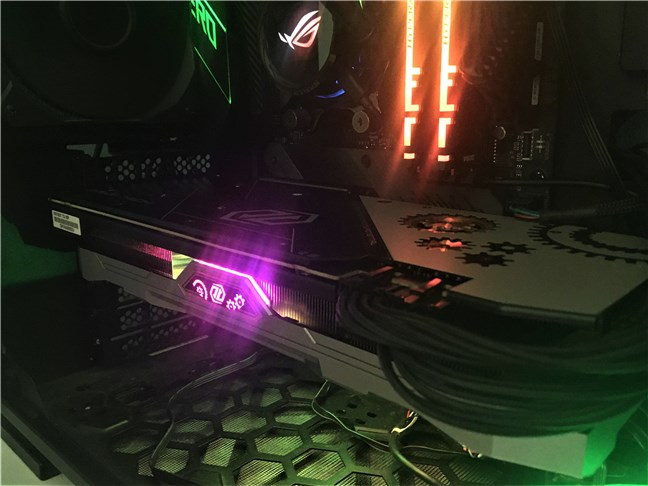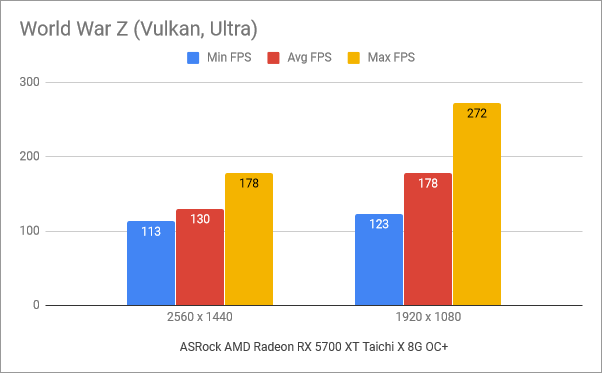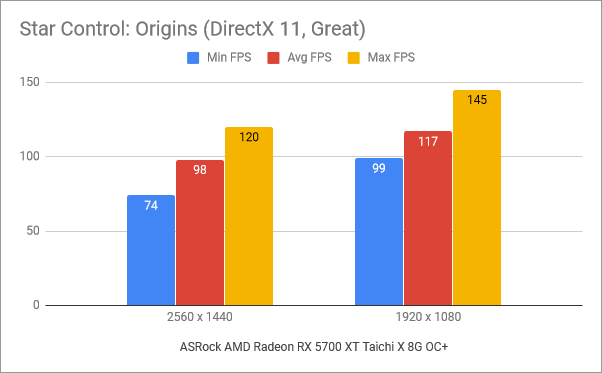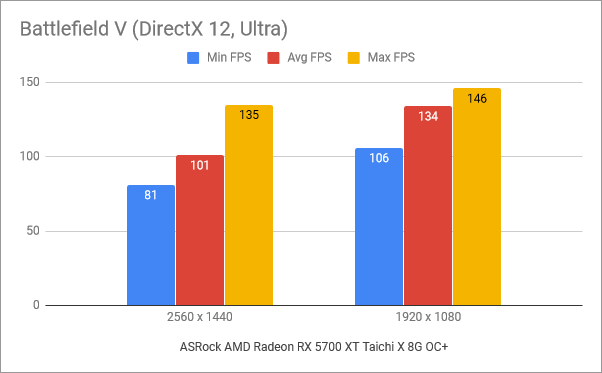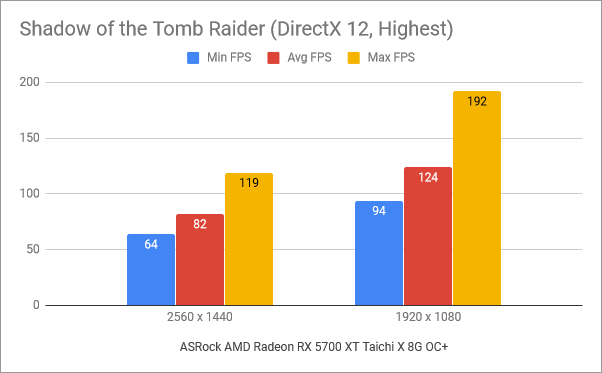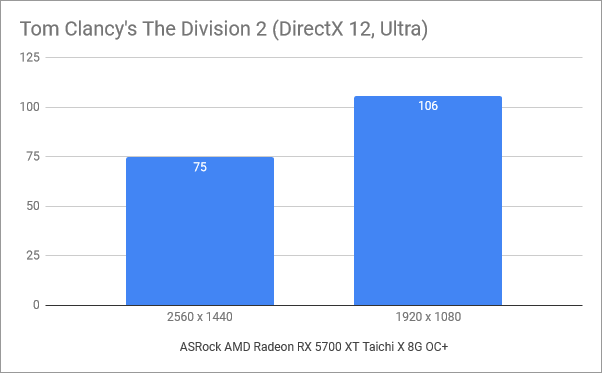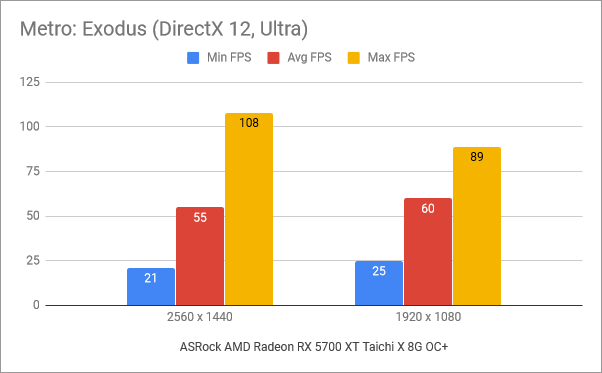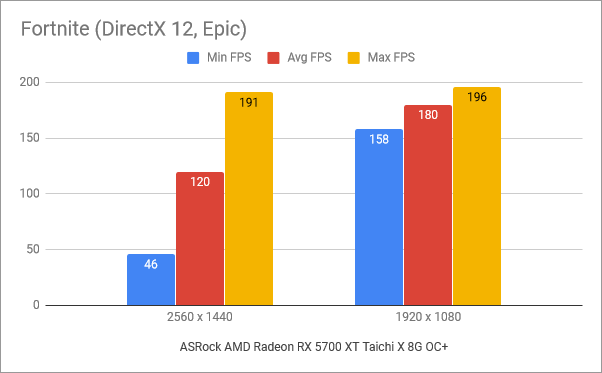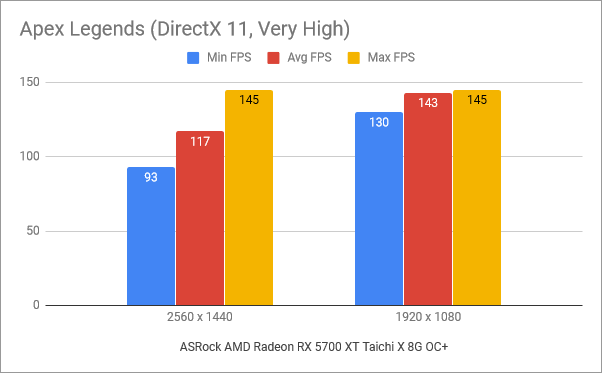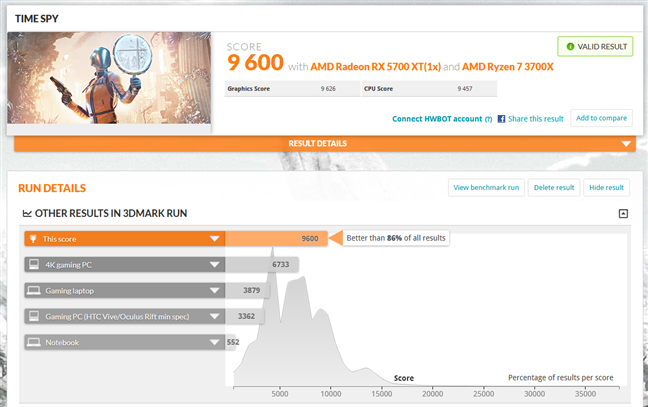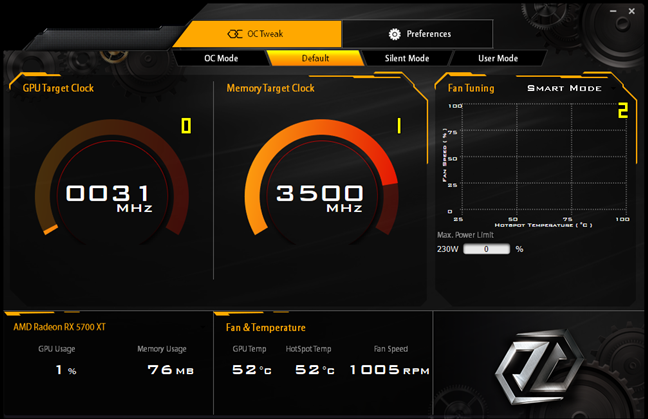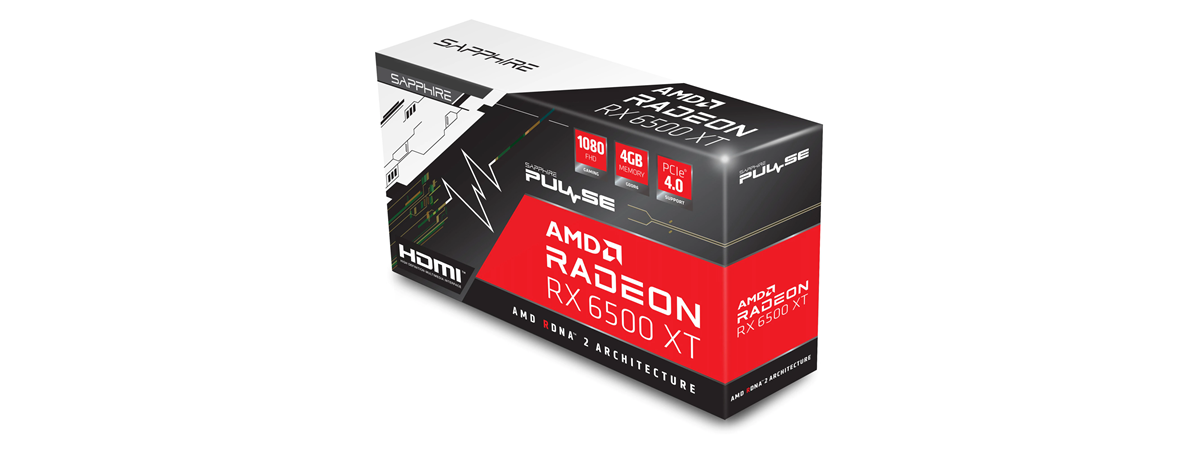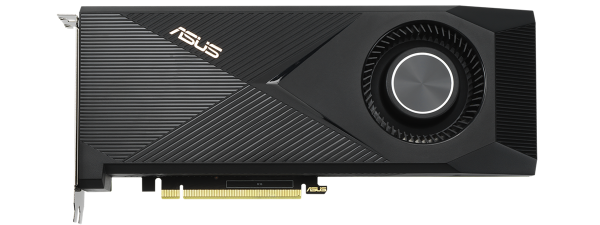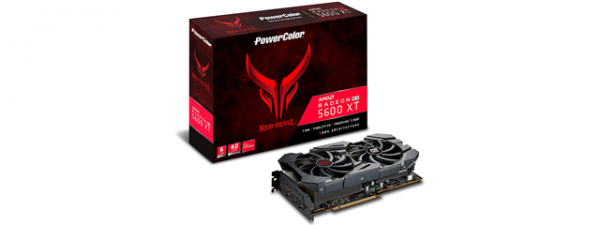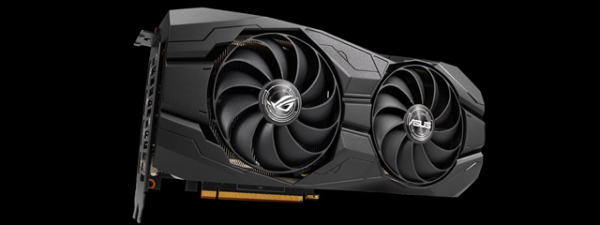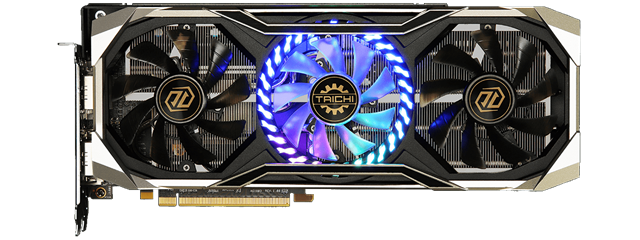
AMD's RX 5700 XT graphics cards are well known for their high performance and top-notch quality. Furthermore, most computer hardware manufacturers have issued custom-built video cards based on AMD's reference, and ASRock is one of them. We tested their top-tier ASRock Radeon RX 5700 XT Taichi X 8G OC+, which is an exquisitely beautiful implementation. If you want to know more about how powerful this graphics card is and how well it handles modern games, read our review:
ASRock Radeon RX 5700 XT Taichi X 8G OC+: Who is it good for?
This graphics card is an excellent choice for gamers who want:
- One of the best video cards available on the market today
- To play games at ultra visual quality and high frame rates
- To be able to play the latest games in 1440p
Pros and cons
There are many positives about the ASRock Radeon RX 5700 XT Taichi X 8G OC+:
- Its performance is excellent throughout all the games and benchmarks
- It uses the latest AMD RDNA architecture on the 7 nm manufacturing process
- It has 8 GB of GDDR6 RAM, more than adequate for any modern game or VR experience
- It supports the new PCI Express version 4.0
- Its cooling system is powerful and does a fine job at keeping the temperatures under control
- Beautiful graphics card design
There are also a few negatives:
- Has a higher price than other AMD Radeon RX 5700 XT implementations from other manufacturers
- It does not support ray tracing while Nvidia graphic cards with similar prices and performance do
Verdict
We fell in love with the ASRock Radeon RX 5700 XT Taichi X 8G OC+. The gears on its metal backplate and the RGB lights are appealing to anyone interested in building a beautiful gaming computer. As for the performance it offers, what more can you ask for? It runs any game on ultra quality settings and does so at high frame rates. If you don't mind spending a bit more money than the average price for an AMD RX 5700 XT, and you are OK without the ray tracing technology, then the ASRock Radeon RX 5700 XT Taichi X 8G OC+ is an excellent choice.
Unboxing the ASRock Radeon RX 5700 XT Taichi X 8G OC+
The ASRock Radeon RX 5700 XT Taichi X 8G OC+ comes in a large box made of cardboard. On its top side, it features the name and the essential features and specs of the graphics card, on a dark matte gray background. Also, on the top-right side of the box, there's a nice design with cogwheels that made us think of cyberpunk.
The back of the package is filled with details about the graphics card's specifications, features, and requirements, as well as illustrations of it and its software.
Opening the box reveals everything you've paid for: the ASRock Radeon RX 5700 XT Taichi X 8G OC+ graphics card, a set of ASRock stickers and similar goodies, the user guide, and warranty documentation.
Unboxing the ASRock Radeon RX 5700 XT Taichi X 8G OC+ is straightforward, and the bundle is generous, so we enjoyed this experience.
Design and hardware specifications
The first thing we noticed about the ASRock Radeon RX 5700 XT Taichi X 8G OC+ is that it's gorgeous. Its backplate features a beautiful design with gears that makes it look like it came straight from a cyberpunk game. The backplate, however, is not there just to look nice, but also to help dissipate the heat. Furthermore, because it is made of metal, it also helps protect the graphics card from bending.
The cooling system is impressive compared to the AMD original Radeon RX 5700 XT design. ASRock uses three fans on top of a massive radiator. There are two 90 mm fans on the sides, and one 80 mm fan in the middle, that's also RGB illuminated.
When the card is running, the RGB LEDs on the cooler also illuminate a series of cogwheels found on the visible side of the graphics card. While we didn't use the ASRock Radeon RX 5700 XT Taichi X 8G OC+ on a motherboard made by ASRock, you should know that this graphics card offers support for the company's Polychrome SYNC technology, which allows you to synchronize its lighting effects with those set on an ASRock compatible motherboard.
The ASRock Radeon RX 5700 XT Taichi X 8G OC+ benefits from AMD's latest RDNA (Navi) architecture and the world's smallest manufacturing process (7-nanometer). It has a base clock of 1820 MHz, its game clock is 1935 MHz, and the maximum boost frequency is 2025 MHz. The card comes with 8 GB of GDDR6 running at a clock of 14 Gbps and with a 256-bit memory bus. It is also built to work on PCI Express (PCIe) 4.0 x16 and supports DirectX 12 and OpenGL 4.6.
ASRock has been very generous with the number of ports available. The AMD Radeon RX 5700 XT Taichi X 8G OC+ has 6 display outputs: four DisplayPort 1.4 with DSC 1.2a and two HDMI 2.0b. In comparison, the standard Radeon RX 5700 XT from AMD only gives you three DisplayPort 1.4 and one HDMI port.
The video card gets its additional electrical power via two 8-pin power connectors and features a 10+1 phase power design. That's more than the recommended 7+1 phase power recommended by AMD and ensures that the graphics card receives enough power even if it runs in overclock mode. Also, ASRock recommends a power supply unit of 700 Watts, which is 100 Watts more than what AMD recommends for the Radeon RX 5700 XT reference specification.
Speaking of overclocking, this graphics card is overclocked from the factory and it has two BIOS versions: one for running in OC mode, and one for running in Silent mode. You can control which BIOS version is loaded on the GPU by using the Dual BIOS switch found on the graphics card. By default, the card is set to run in OC mode.
Regarding the physical dimensions, the ASRock Radeon RX 5700 XT Taichi X 8G OC+ graphics card is large. It occupies two slots and has a length of 12.77 in (324.35 mm), a width of 5.73 in (145.39 mm), and a height of 2.1 in (53.18 mm).
The ASRock Radeon RX 5700 XT Taichi X 8G OC+ is a beautiful graphics card that impressed us with its design, and its hardware specifications are slightly improved over the AMD Radeon RX 5700 XT reference. Just by looking at its specs, you know that this is a powerful graphics card that can handle any game, in 1440p or 1080p, at the highest quality.
Performance in games and benchmarks
To see how fast the ASRock Radeon RX 5700 XT Taichi X 8G OC+ graphics card is, we tested several games and ran some benchmarks. Here's the hardware and software platform on which we tested this card:
- Processor: AMD Ryzen 7 3700X (8 cores, 16 threads, Base Clock 3600 MHz, Max Boost Clock 4600 MHz)
- Motherboard: ASUS ROG Crosshair VIII Hero (Wi-Fi)
- Memory: HyperX Predator DDR4 RGB (2 x 8 GB, 3600 MHz)
- Storage: ADATA XPG Gammix S50 1 TB SSD (PCIe 4.0 x4)
- Monitor: ASUS ROG Strix XG32VQ Curved Gaming Monitor (32-inch WQHD 2560 x 1440, 144 Hz)
- Power Supply Unit: ASUS ROG Thor 850W Platinum
- Operating System: Windows 10 Pro x64 with November 2019 Update
- GPU Drivers: AMD Radeon Software Adrenalin 2020 Edition Version 19.12.2
We began with testing the performance offered in World War Z. We used the Vulkan API and the Ultra graphics quality settings. When running the game on the 2560 x 1440 resolution, we got a minimum of 113 frames per second (fps), an average fps of 130, and a maximum fps of 178. Using the 1920 x 1080 resolution, the minimum fps was 123, the average 178, and the maximum 272.
Star Control: Origins is a game that uses DirectX 11 and does not offer a benchmarking tool. However, we measured the fps output while driving a lander on the Triton moon using the highest possible graphics settings, on both 1440p and 1080p resolutions. In QHD resolution (2560 x 1440 pixels), we measured a minimum fps of 74, an average of 98, and a maximum fps of 120. In FHD (1920 x 1080 resolution), we measured 99 fps minimum, 117 average, and 145 maximum.
Battlefield V is another popular game and one that demands a lot of hardware resources to display its best graphics quality. For it, we used the DirectX 12 API and the Ultra quality settings. When we ran the game at 2560 x 1440 resolution, we had a minimum fps of 81, an average of 101, and a maximum of 135. On the 1920 x 1080 resolution, the minimum fps was 106, the average 134, and the maximum 146.
Shadow of the Tomb Raider is a game with exquisite visuals, but the graphics quality has its price and requires a powerful graphics card to run well. We tested it on DirectX 12, TAA (Temporal Anti-Aliasing), and the Highest preset for graphics quality. When we benchmarked the game in 1440p (2560 x 1440 pixels resolution), we measured a minimum fps of 64, an average of 82, and a maximum of 119. In Full HD (1920 x 1080 resolution), we got a minimum of 94 fps, an average of 124, and a maximum of 192.
Tom Clancy's The Division 2 has a benchmarking tool that only outputs the average fps. Using DirectX 12 and the Ultra graphics quality preset, we obtained an average fps of 75 on the 1440p resolution and 106 fps on the 1080p resolution.
Metro Exodus also has some very steep hardware requirements, if you want to play it at the highest graphics quality possible. It is also the game that rendered the fewest frames in our tests. Using DirectX 12, the Ultra video preset, and a resolution of 2560 x 1440 pixels, we only managed to get a minimum of 21 fps, an average of 55 fps, and a maximum of 108 frames per second. Switching to the 1920 x 1080 pixels resolution meant a small increase in the number of fps: a minimum of 25, an average of 60, and a maximum of 89.
We have also benchmarked ASRock Radeon RX 5700 XT Taichi X 8G OC+ in Fortnite, which is not a particularly graphics-demanding game, but it is very popular with online gamers. We used the Epic graphics settings and measured a minimum fps of 46, an average of 120, and a maximum of 191 frames per second when using the 2560 x 1440 pixels resolution. When we used the 1920 x 1080 pixels resolution, the game rendered a minimum of 158 fps, an average of 180, and a maximum of 196. As you can see, the minimum fps we saw on 1440p was pretty low. However, this is likely due to the fact that Fortnite's DirectX 12 implementation is in Beta mode for now, and thus probably still has issues left to be ironed out. Overall though, the average fps was very high in both resolutions that we tested.
In Apex Legends, another popular online battle royale game, using the highest graphics quality set, we measured a minimum of 93 fps, an average of 117 fps, and a maximum of 145 fps on the 1440p resolution. In Full HD, we measured 130 fps minimum, 143 fps on average, and 145 fps maximum.
Finally, we also ran a few benchmarks specialized for gaming, from 3DMark and Unigine. In 3DMark's Time Spy, which uses DirectX 12, on a 2560 x 1440 pixels resolution, we got a score of 9600 points. In Unigine SuperPosition, using the Extreme graphics preset and a resolution of 1080p, we got a score of 3460 points with DirectX 11 and 4415 points with OpenGL.
We also wanted to see how much power the video card draws when running games or other similar apps that use its resources intensively. We discovered that the card draws up to 229 Watts, which means that the recommendation of a 700 Watts power supply unit made by ASRock is good and you should follow their advice.
Another important element is the heat produced by the video card. To see how hot the card gets, we played Metro Exodus for about 15 minutes at the ultra video quality, while monitoring the temperatures. We found that the ASRock Radeon RX 5700 XT Taichi X 8G OC+ can get as hot as 79 degrees Celsius or 174 degrees Fahrenheit. That's a good result and a rather significant improvement compared to the AMD Radeon RX 5700 XT reference card which gets very hot: up to 86 degrees Celsius or 187 degrees Fahrenheit.
ASRock Radeon RX 5700 XT Taichi X 8G OC+ proved to be one of the fastest and most powerful graphics cards that we tested this year. It is able to run any game at ultra settings without issues, both in Full HD and 1440p resolutions.
Bundled software
For the ASRock Radeon RX 5700 XT Taichi X 8G OC+ graphics card, the manufacturer offers you a tool called ASRock Taichi Tweak. It's a desktop app for Windows that allows you to monitor the graphics core and memory clocks, their utilization, the fan speeds, and temperatures. Furthermore, you can also adjust and customize its clocks and memory speed, and control the speed of fans.
The ASRock Taichi Tweak app is a lightweight software that offers just the basics you need. We found it useful, especially for tweaking the fans speed curve.
What is your opinion about the ASRock Radeon RX 5700 XT Taichi X 8G OC+?
Now you know how we feel about the ASRock Radeon RX 5700 XT Taichi X 8G OC+ graphics card. It's an excellent implementation of AMD's Radeon RX 5700 XT reference, offering incredible performance. Before closing this review, tell us your opinion about it. Would you buy this graphics card? Comment below and let's discuss.


 18.12.2019
18.12.2019 